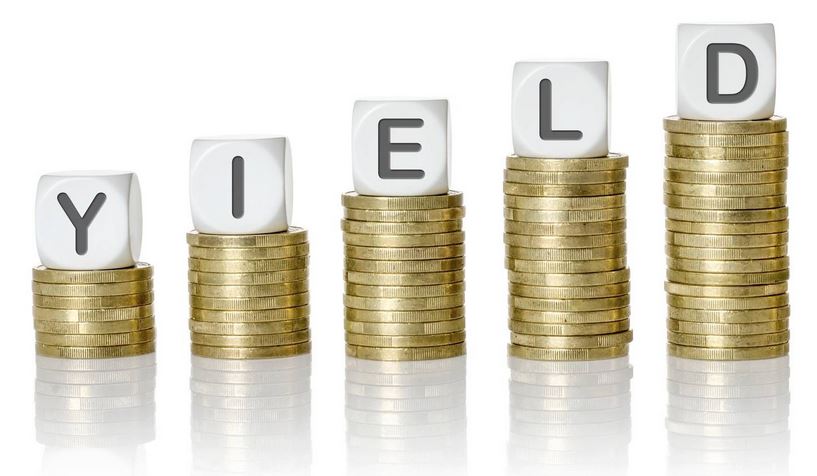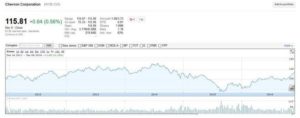Yield on cost is a popular metric used by dividend investors. The measure itself, however, is not all that useful when it comes to making incremental investment decisions. It is far better to evaluate the fundamentals of a business and to ensure sure its dividend safety and growth profile are still aligned with our investment objectives.
There is a difference between dividend yield on cost versus dividend yield. Dividend yield is a common measurement used by investors seeking investments to generate a dividend income stream. Dividend yield on cost, however, is a fallacy.
I will use Chevron (NYSE: CVX) to explain my point.
The stock chart for Chevron which extracted from Google Finance on December 9, 2016 reflects a 3.73% dividend yield; this dividend yield is calculated using the forward dividend.
Chevron's dividend yield is calculated by taking the forward quarterly dividend of $1.08, multiplying it by 4 to arrive at $4.32/annually, and dividing this annual value by the current market price of $115.81.
Chevron’s quarterly dividend was increased by $0.01 to $1.08 starting with the upcoming December 2016 dividend payment and is the dividend reflected in Google's stock chart. The reason for this is because investors want to know the dividend yield based on the most recent dividend approved by the company's Board of Directors.
Some investors ignore the current market price when calculating dividend yield. Their position is that the current market price is irrelevant because that is not what they paid for their shares. They propose that the expected dividends for the next 4 quarters be divided by their average cost. This is known as Dividend Yield on Cost.
The reason I think Dividend Yield on Cost is a fallacy is because it is a backward-looking measure. Dividend Yield, however, is forward looking.
Let's say you had purchased Chevron for $57 near the end of 2005 when the quarterly dividend was $0.45. Using the dividend yield on cost metric, my yield is 7.58% (($1.08*4)/$57). In essence, the dividend yield on anything else of comparable risk now pales in comparison.
The flaw with the dividend yield on cost point of view is that you are dividing a current metric (annual dividend) by a historical metric (stock price). Furthermore, the amount of capital tied up in Chevron is not $57/share. The current market price is what matters because that is what you would receive if you sold your Chevron shares today; your original purchase price is irrelevant.
So while dividend yield on cost might be valuable for demonstrating the wonderful benefits of dividend growth, it should never be considered a reason to hold a stock or to be used to compare yields on other investments.
Judge the value of your investment on the bases of current market value versus the price paid.
I wish you much success on your journey to financial freedom.
Thanks for reading!
Note: I sincerely appreciate the time you took to read this article. Please send any feedback, corrections, or questions to [email protected]
Disclaimer: I have no knowledge of your individual circumstances and am not providing individualized advice or recommendations. I encourage you not to make any investment decision without conducting your own research and due diligence. You should also consult your financial advisor about your specific situation.
Disclosure: I am long CVX.
I wrote this article myself and it expresses my own opinions. I am not receiving compensation for it and have no business relationship with any company whose stock is mentioned in this article.



